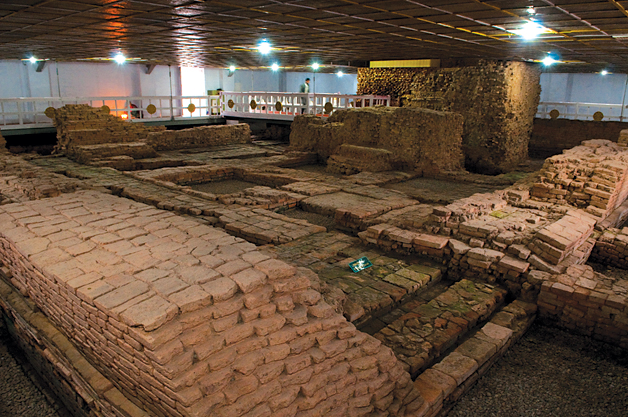
Lumbini, famed as the birthplace of Lord Buddha, is tranquil on a cold winter afternoon. I had traveled there from Kapilvastu, yet another location of historical significance to Buddhists, for an afternoon of sightseeing and to pay homage to the genesis of the fourth largest religion in the world.
Entering the main gate to the Maya Devi temple, birthplace of Lord Buddha in 500-600 BCE, I was greeted by an uncommon sight: armed soldiers and a sizeable entourage surrounding a tall white man.
Even from a distance, there was a regal air about this yet unrecognizable dignitary. A European politician was my initial guess. Yet, as I moved closer towards him, the mane of white hair crowned an unmistakeable face: the genial silver screen star, Richard Gere.
He was being shown around the grounds and, for a moment, caught my star struck facial expression. His hands, which once embraced Julia Roberts in Pretty Woman, went up in a friendly wave and soon after he was directed away.

Encounters such as these aren’t exactly fortuitous. In recent times, the reach of Buddhism has gone global beyond the traditional confines of Asia. Increasingly, people in Europe and North America are getting attracted to the ‘Middle Way’, a central tenet of Buddhism that espouses moderation in between indulgence and mortification.
Celebrity Buddhists go well beyond my encounter with ‘Mr. Pretty Woman’. The list of famous devotees includes action hero Steven Segal, recently disgraced golfing legend Tiger Woods, singer Tina Turner and jazz pianist Herbie Hancock.
Too often, historic sites in Nepal have been sullied by the presence of commercial outlets blaring music and teeming with reclining tourists, but not the peaceful grounds of Lumbini. It was declared a UNESCO World Heritage Site in 1997, and as a monastic zone, no shops, hotels or restaurants can be located in its grounds.
During my visit, there were few visitors other than the heavily guarded Mr. Gere. Locals informed me that Lumbini is popular during the Spring/Summer period, when flowers are in bloom and the winter fog has cleared up.

No doubt the biggest attraction for Buddhists and non-Buddhists alike is the Sanctum-Sanctorum, which houses a stone placed by Indian emperor Ashoka in 249 BCE to mark the birthplace of Lord Buddha.
Lumbini is also home to numerous other temples, supported by various countries and communities. Well-maintained monasteries to visit include the Chinese Zhong Hua Buddhist Monastery, and temples from Mongolia, Korea, Sri Lanka, Myanmar and Thailand.
I caught a variety of foreign accents in the air as I explored the calm grounds of Lumbini and occasionally saw a few saffron robed monks as they walked in small groups, heads bowed in meditation.
For a casual visitor, aim to arrive early as the grounds are large and time should be spent slowly, admiring the architecture, artwork and carvings that adorn most of the temples.
Only 27 km from the town of Kapilvastu and closely bordering India, Lumbini is easily accessible by bus. Who knows, your visit may reward you both spiritually and with a celebrity sighting!











